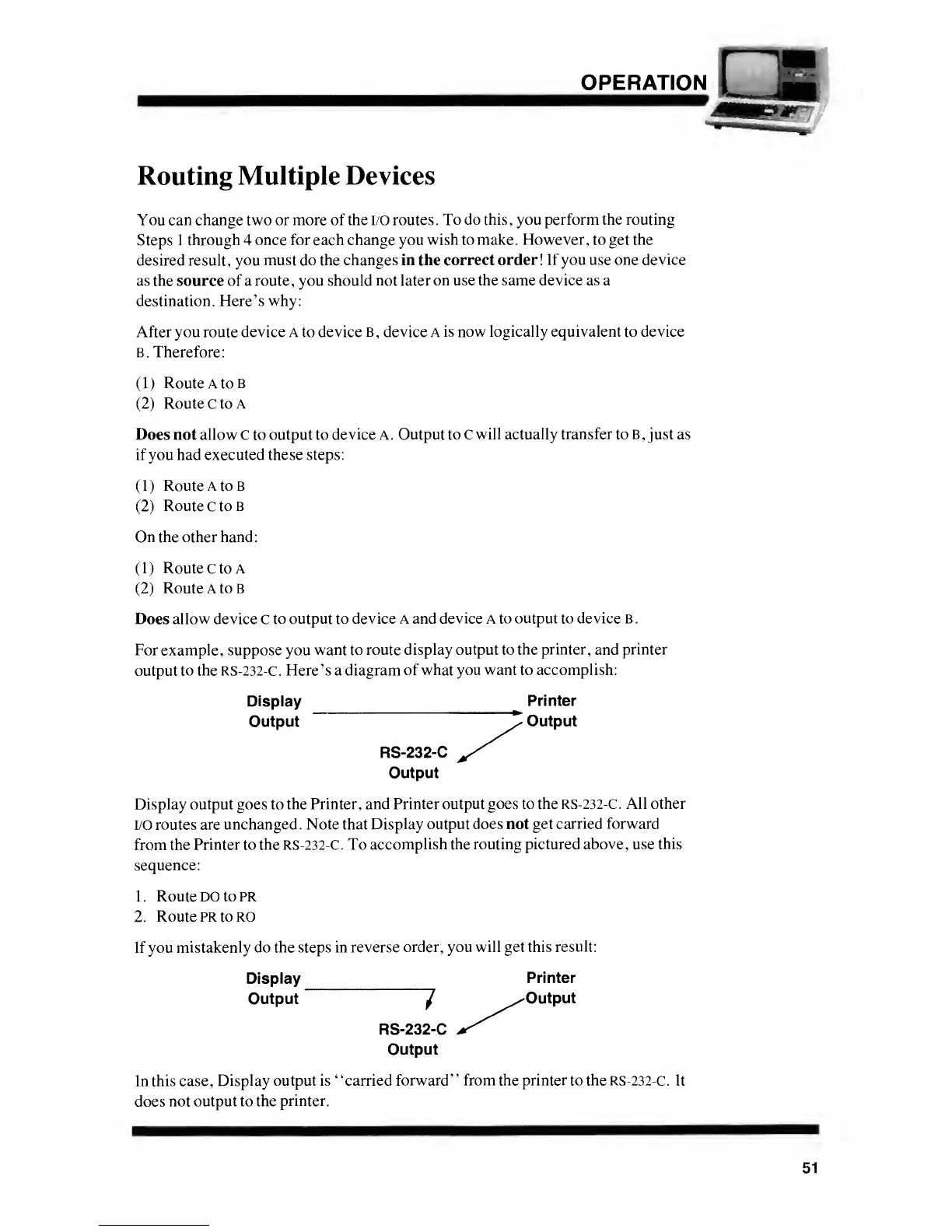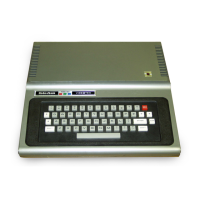OPERATION
Routing Multiple Devices
You can change two or more of the I/O routes.
To do this, you perform the routing
Steps 1
through 4 once for each change you
wish to make. However, to
get
the
desired result,
you must do the changes in the correct
order!
If
you use one device
as the source of a route, you should
not
later
on use the same device as a
destination. Here's
why:
After you route device A to device
B,
device A
is now logically equivalent to device
B. Therefore:
(1)
Route A to
B
(2)
Route
C
to A
Does not allow C to output to
device
A.
Output to C
will
actually
transfer
to
B,
just as
if you had executed these steps:
(1)
Route A to B
(2)
Route
C
to B
On the other hand:
(1)
Route C to A
(2)
Route
A
to B
Does
allow
device C
to output to device A and
device
A
to output to device B
.
For example, suppose you
want to route display output to
the printer,
and
printer
output
to the RS-232-C. Here's a diagram
of what you
want
to accomplish:
Display
Printer
Output
RS-232-C
y
Output
\ Output
Display output goes to
the Printer, and Printer output
goes to the RS-232-C. All other
I/O
routes are unchanged. Note that
Display output does not get
carried forward
from the
Printer to the RS-232-C. To
accomplish the routing pictured above, use
this
sequence:
1.
Route DO to PR
2.
Route PR to RO
If you
mistakenly do the steps in reverse
order, you will get this
result:
Display
Output
RS-232-C
*S
Output
Printer
.-Output
In this case,
Display output is "carried
forward" from the printer to the RS-232-C.
It
does
not output to the
printer.
51

